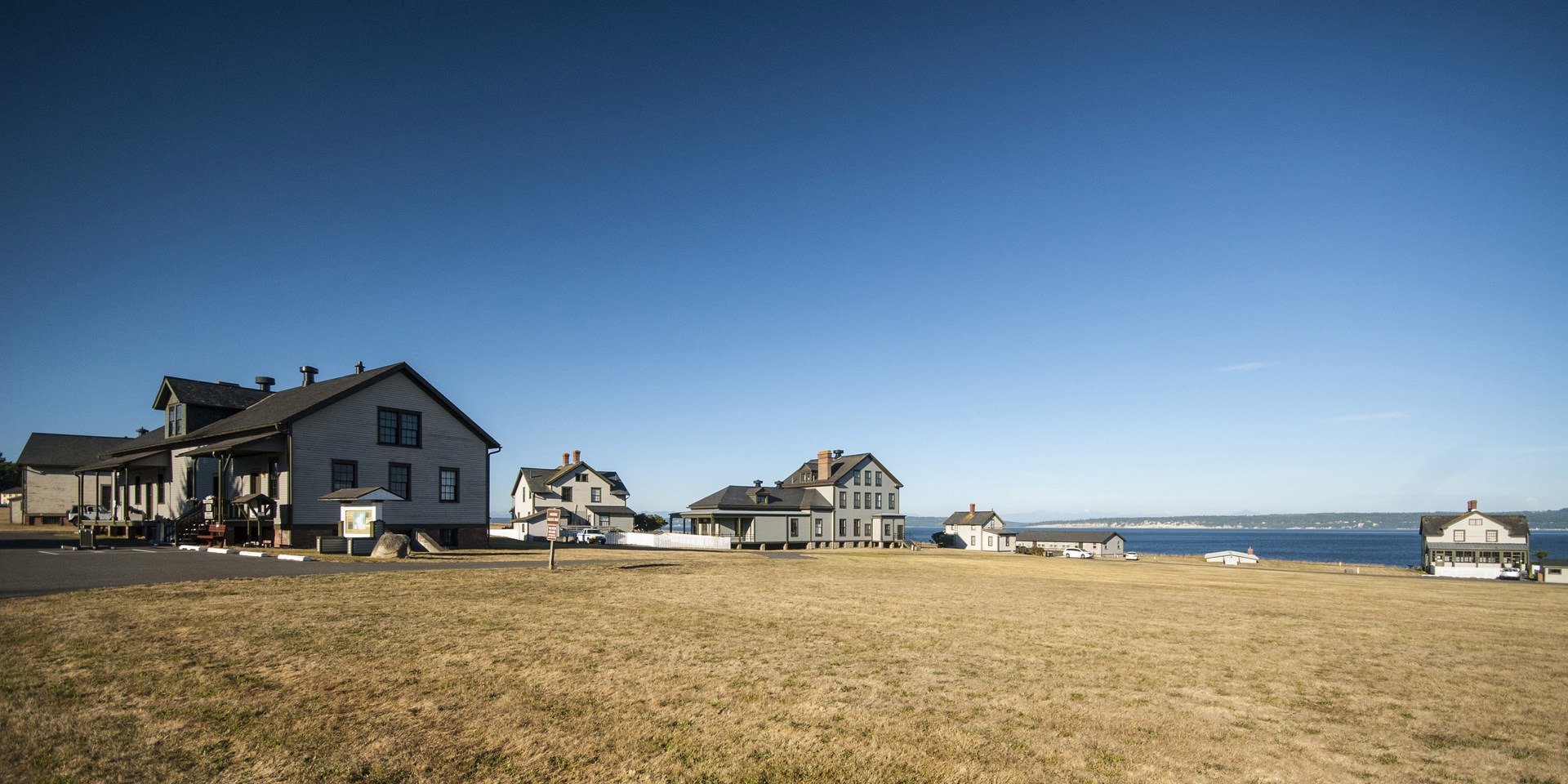You are here
Situated on the northern tip of Marrowstone Island, Fort Flagler was the southern point in the Army's "Triangle of Fire" implemented to protect Admiralty Inlet from maritime attacks. Together with Fort Worden to the northwest on the Olympic Peninsula and Fort Casey to the northeast on Whidbey Island, Fort Flagler ensured that any boats entering the U.S. portion of Puget Sound from the Strait of Juan de Fuca would face one of the most heavily armed choke points on the West Coast. Largely completed and officially activated by 1899, Fort Flagler was actually the first of three forts to become operational. The fort was also the original headquarters for the Harbor Defense Command of Puget Sound, a role it relinquished when the larger Fort Worden was ready to take on the administration in 1904.
The fort saw its most active period after the U.S. entered World War I. As with Fort Worden, the Army shipped the fort's artillery guns to Europe, and the base became a training ground. In World War II the fort's guns were replaced with anti-aircraft guns, and the fort continued to be used for training and preparation. The fort was deactivated following the end of the Korean War in 1953, and by 1962 the state had purchased the fort to convert it into a state park.
Today Fort Flagler is a 784-acre public resource for visitors looking to enjoy the fort's museum and tours, hiking and biking trails, extensive beachfront, and campground. Many of the historic military accommodations have been carefully restored and are available for rent as vacation houses. Several day use amenities are present at the park, including sheltered picnic areas, two boat ramps, a boat dock, moorings, and swimming areas. And of course, the views are magnificent when the weather is clear: you'll be able to see the two other forts over Admiralty Inlet, the cliffs of Indian Island and the distant peaks of the Olympic Mountaints to the southwest, Mount Baker towering to the northeast, and Mount Rainier to the southeast. The park has 3.5 miles of coastline, and walking any part of it is a great way to get some perspective on this beautiful section of Puget Sound.
Fort Flagler's lower campground, day use amenities, vacation homes, and grounds are open year round from 6:30 a.m. to dusk in the summer and 8 a.m. to dusk in the winter. The upper campground is closed from the end of September to the beginning of May.
Washington State Boat Moorage
Due to the extensive Puget Sound, the Washington State Parks + Recreation Commission boasts the most extensive mooring system in the U.S. All buoys and dock moorage slips are based on a first-come, first-served management system with a three consecutive night limit. Permit and payment of moorage fees are required.
Puget Sound Lighthouses
In total, the Puget Sound is home to 19 U.S. lighthouses still standing, not all of which are currently in use. The others include (from north to south):
- Patos Island Lighthouse
- Turn Point Lighthouse
- Lime Kiln Lighthouse
- Cattle Point Lighthouse
- Burrows Island Lighthouse
- New Dungeness Lighthouse
- Admiralty Head Lighthouse
- Point Wilson Lighthouse
- Bush Point Light
- Mukilteo Lighthouse
- Skunk Bay Lighthouse
- Point No Point Lighthouse
- West Point Lighthouse
- Alki Point Lighthouse
- Point Robinson Lighthouse
- Browns Point Lighthouse
- Gig Harbor Lighthouse
- Dofflemyer Point Lighthouse
Logistics + Planning
Current Weather: Powered by Dark Sky
























Comments
Sign In and share them.